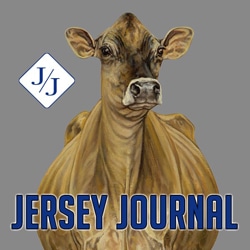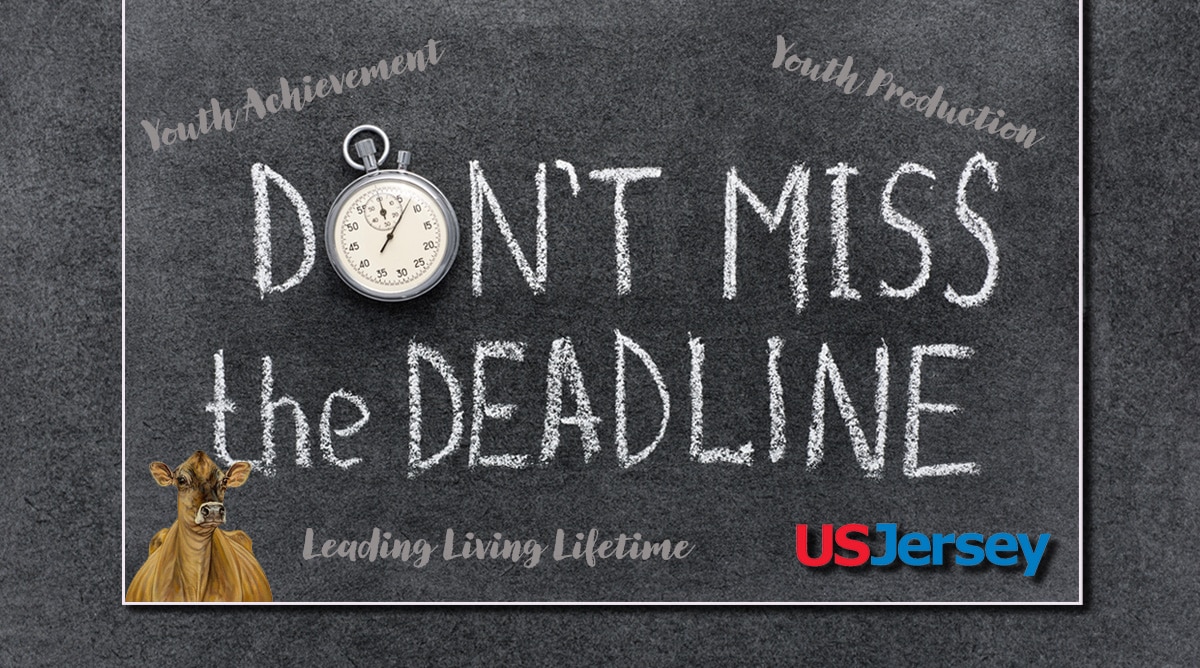Adapt to Capitalize on Dairy Industry Change
Excerpts from the reports of Neal Smith, Executive Secretary of the American Jersey Cattle Association (AJCA) and National All-Jersey Inc. (NAJ), at the 65th Annual Meeting of NAJ on June 23, 2023, and the 155th Annual Meeting of the AJCA the following day in La Crosse, Wis.
Smith celebrated milestones and accomplishments of the national Jersey organizations in 2022, described a changing dairy industry, and stressed the need to adapt to continue to do the progressive work of the AJCA and NAJ.
The Rear View Mirror
From a historical perspective, 2022 was a good year. Strong participation in performance programs tracked with strong milk prices. The Jersey organizations established several new records in 2022, including the number of herds (1,001) and cows (165,099) enrolled on REAP. All measures of standardized production increased year-over-year and stand at a record high 20,447 lbs. milk, 1,005 lbs. fat and 765 lbs. protein. Cheese yield is now 2,602 lbs. on an m.e. basis and energy corrected milk production is 22,574 lbs.
Registration totals for the year rank #6 in breed history at 122,092 and represent the 11th consecutive year they have exceeded 100,000. More than 44% of the animals registered in 2022 came from California (54,085), followed by Oregon (11,360) at 9.3%, and Wisconsin (8,837) at 7.2%. New Mexico ranks fourth at 5.8%, with most of these registrations (7,085) coming from two large herds. Rounding out the top 15 states are Iowa, Pennsylvania, New York, Ohio, Texas, Illinois, South Dakota, Vermont, Maine, Maryland, and North Carolina.
The distribution of cows by herd size paints a picture of how the dairy industry has changed over the past several decades. Today, more than half of the cows enrolled on REAP are milked in large herds with more than 1,000 cows (59,813 cows in herds with more than 3,001 cows; 35,686 cows in herds with 1,000-3,000 cows).
The distribution of REAP customers, though, is skewed to the other end of the spectrum, with nearly 65% of customers (627) milking herds with 1-50 Jersey cows. Many of these smaller Jersey herds are part of a larger, mixed-breed herd. Herd owners with herds over 3,001 Jersey cows (11 customers) account for 1% of the customer base, and owners with 1,001-3,000 Jersey cows (20 customers) represent about 2% of the total. The design and pricing structure of REAP, which is equitable to herds of all sizes, has enabled the program to grow while the total number of dairy herds across the country continues to shrink.
During 2022, appraisers scored 116,576 animals in 1,648 herds in 47 states. It is the 10th consecutive year the appraisal team has scored more than 100,000 animals during the calendar year. Members of the Type Advisory Committee, which guides the appraisal program, are appointed to five-year terms by the AJCA board. They represent both ends of the REAP spectrum and hail from farms coast-to-coast with a variety of management styles and breeding programs.
NAJ continued its work to promote equitable milk pricing, submitting three proposals to USDA for the upcoming Federal Milk Marketing Order hearings and keeping members abreast of milk marketing issues that impact them. Last year, 955 Equity members contributed nearly $600,000 to Project Equity as the primary source of funding for NAJ.
Results of two studies funded with grants from the AJCC Research Foundation were completed in 2022: a risk of culling and survivability study by Dr. Kent Weigel of the University of Wisconsin-Madison and a study to update the Capper/Cady sustainability project by Roger Cady and Frank Mitloehner of the University of California-Davis.
The Weigel study concluded that production, inbreeding, and type traits have an impact on survival, production level has a major impact on survival, and the traits udder depth, fore udder and rear udder height have the largest impact on survival.
The sustainability study revealed both positive and negative changes in Jersey performance from 2009 to 2020. On the upside, Jersey milk production rose 26.5% to 58.2 lbs. per cow per day (65.9 lbs. ECM), fat test rose .09%, calving interval dropped about two weeks, age at first calving was lowered three months, and a third less feed was required for production. On the flip side, Jersey body size increased 13% to 1,130 lbs., which contributed to a larger carbon footprint as opposed to the previous study. To improve sustainability, the Jersey breed needs to continue to improve production per cow, increase component tests and maintain, not increase, cow size.
Smith also brought members up to speed on Jersey Youth Academy (held in July in Columbus, Ohio) and recent Jersey Journal changes. Subscribers will continue to be able to read the magazine three ways electronically—link to website, link to flip version, and link to downloadable PDF—and a printed and mailed hard copy in January and September. Subscribers can also order the Jersey Journal as “print-on-demand” for an additional fee.
Looking Ahead
We are living in amidst a rapidly changing dairy industry, noted Smith. In 2003, there were more than 70,000 licensed dairy farms producing milk in the U.S. Twenty years later, in 2022, that number fell to fewer than 28,000. Cow counts for the national dairy herd have held relatively consistent, around nine million, which equates to larger herds on average.

The number of farms and average herd size are not the only changes on dairy farms. Recently, sexed semen and beef-on-dairy have altered herd management as dairy producers strive to remain economically viable. While domestic Jersey semen sales continue to be strong at 2.4 million units in 2022, they are steadily dropping from a peak of 3.4 million in 2017. Meanwhile, beef semen sales have steadily grown, especially over the past three years. In 2015, domestic beef semen sales totaled 2.6 million units. Last year, they reached 9.8 million. Angus is the dominant beef breed, with four times as many units sold (4.8 million) as the second most popular breed, Simmental (1.1 million). Sales of Charolais bull semen grew 26% in 2022 versus 2021 to move the breed to third in the ranking, followed by Limousin, and Wagyu.
While the industry is changing, it is not going away, Smith summed. There is opportunity, so the Jersey association needs to adapt and adjust. We have accomplished a lot, but there is still work to be done.




